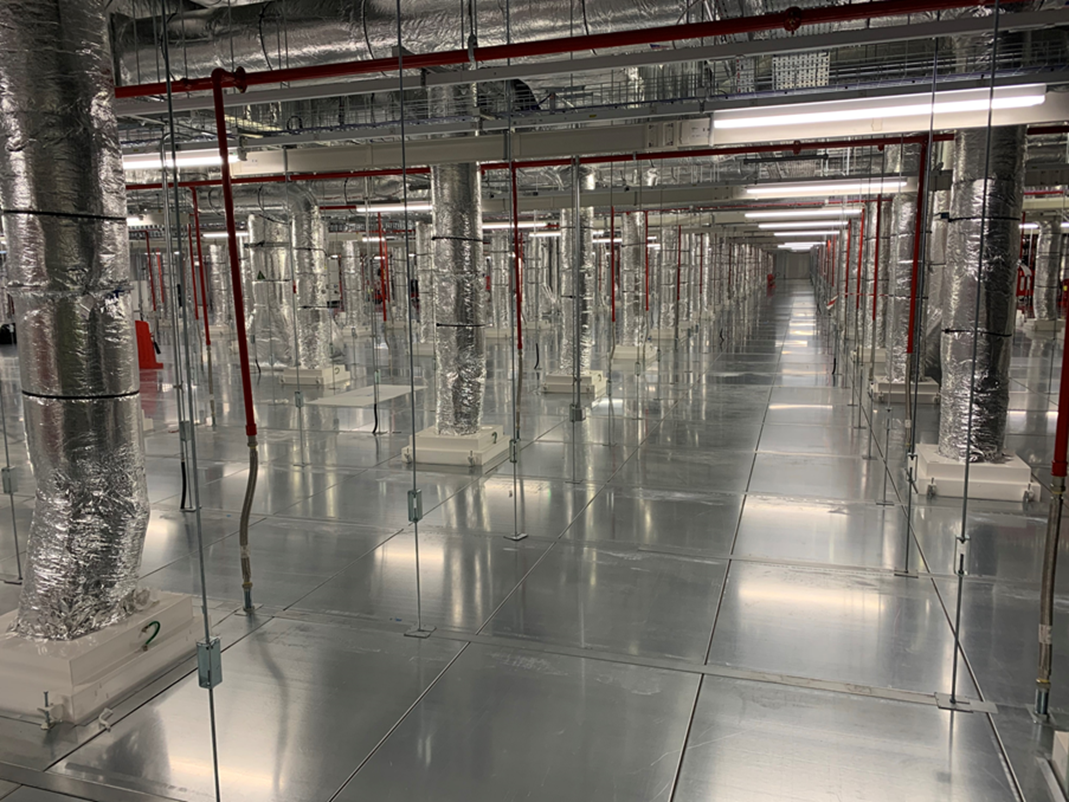Ardmac Bi-Panel System: A Flexible and Efficient Partition Solution
The Ardmac Bi-Panel system is an innovative cleanroom solution designed to offer unparalleled flexibility, efficiency, and ease of reconfiguration. This advanced system allows for parallel construction, enabling one side of a room to remain fully operational while work continues on the other.
Key Features and Benefits
Enhanced Flexibility and Accessibility
The Bi-Panel partition system consists of a stud framework with panels attached to either side. This unique design allows for quick and easy removal or reconfiguration of panels, making modifications effortless. Unlike traditional mono-block systems, where services are concealed within the structure, the Bi-Panel partition system provides a service void between the panels. This void can be customised to various depths to accommodate ducts, cables, and other infrastructure, ensuring adaptability to different project requirements.
The Bi-Panel ceiling, designed to complement the partition system, supports a uniform distributed load (UDL) of 2.5 kN/m², with suspension centres set at 2.4m by 1.2m. This open-plan suspension design allows for the installation of mechanical and electrical (M&E) services above the ceiling while minimising clashes. The ceiling features a main runner spaced at 1.2m centres, with tiles spanning between the main runners both at the top and bottom. The tiles, lights, and terminal housings are interchangeable, providing an agile and flexible solution. Additionally, cables can be discreetly concealed within the main runner and tiles, creating a clean and safe walkable surface on top of the ceiling
Streamlined Construction Process
The Bi-Panel system facilitates early integration of trades, allowing electrical and mechanical services to be installed concurrently with partition construction. Electricians, for example, can install cable raceways, back boxes, and other components within the service void before panels are fully secured. This significantly reduces project timelines and eliminates the delays associated with waiting for traditional wall structures to be completed.
Efficient Reconfiguration and Maintenance
One of the standout advantages of the Bi-Panel system is its ease of modification. If a space needs to be upgraded or reconfigured, individual panels can be removed and replaced without major demolition. Services within the void are easily accessible by simply lifting off the panel, eliminating the complexity of accessing concealed installations in traditional systems.
Additionally, the Bi-Panel system enables the use of a ‘plug-and-play’ approach for utilities. Electrical outlets, lighting fixtures, and other components can be quickly disconnected, removed, and repositioned without significant construction work, offering a cost-effective and sustainable solution for dynamic environments.
Offsite Manufacturing for Quality and Efficiency
All Bi-Panel components are manufactured offsite at Ardmac’s dedicated facility at Dagard in France, ensuring precision engineering and high-quality finishes. This offsite construction approach minimises on-site waste, reduces construction disruptions, and accelerates project completion. Pre-formed openings for light fixtures and terminal boxes further enhance efficiency, allowing for seamless installation once the panels arrive on-site.
Comparison with Mono-Block Systems
While traditional mono-block systems require workshop modifications for every new fitting, the Bi-Panel system allows for direct, on-site adjustments without the need for extensive cutting or remanufacturing. Lighting fixtures, for example, can be easily repositioned within the ceiling tile layout, while terminal housing units can be relocated without creating waste or requiring new panel installations.
Conclusion
The Ardmac Bi-Panel system is a game-changer in partition construction, offering unmatched flexibility, rapid installation, and seamless service integration. Whether for new builds or renovations, this system provides a highly efficient and adaptable solution, reducing costs, minimising disruption, and ensuring spaces can evolve to meet changing needs. With its offsite manufacturing approach and plug-and-play service integration, the Bi-Panel system represents the future of modern, high-performance partitioning solutions.



